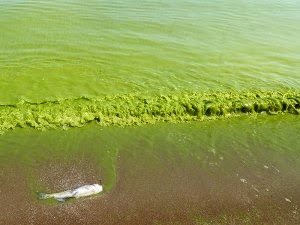Kimberly D. Bose, Secretary
Federal Energy Regulatory Commission
888 First Street NE, Room 1A
Washington, DC 20426
Dear Ms. Bose,
The comments submitted below are pursuant to the scoping
process for the proposed ET Rover Pipeline (Docket #PF14-14-000). These comments are submitted on behalf of the
Sierra Club Michigan Chapter, 109 E Grand River Avenue, Lansing, MI 48906.
Nancy Shiffler
Chair, Michigan Beyond Natural Gas and Oil Committee
December 16, 2014
There is little in this proposal that reflects a “balancing
of public benefits with residual impacts.”
This pipeline is part of an attempt by the natural gas industry to find
a market for its over production in the Marcellus play in Pennsylvania, Ohio,
and West Virginia, in particular to expand exports. There is no demonstrated need for additional
natural gas capacity in Michigan or in the region in general, while the impact
on the safety, economic value, and environmental health of local property
owners and communities would be considerable.
Public Convenience and Necessity
• In determining the proper scope of an EIS
under NEPA, an agency must consider cumulative and similar actions (40 C.F.R.
1508.25).
-
“Cumulative actions” are defined as actions
which, when viewed with other proposed actions, have cumulatively significant
impacts and therefore must be discussed in the same EIS (40 C.F.R. 1508.25(a)(2)). There are at least eight existing pipelines
crossing between Canada and the Eastern US and six new pipelines and pipeline
expansions planned, and a total of 57 new pipelines and expansions approved or
pending flowing in all directions. FERC
should consider the cumulative impact of all of these proposed pipelines, including
both environmental impacts and the rate of depletion of the resources
themselves.
-
“Similar actions” are actions which, when viewed
with other reasonably foreseeable or proposed actions, have similarities that
provide a basis for evaluating their environmental consequences together (40 C.F.R.
1508.25(a)(3)). There are a number of
proposed and existing pipeline projects that would fit this definition,
including the proposed Spectra Energy Nexus pipeline, which runs parallel to
the proposed Rover pipeline through Ohio and Michigan, with similar starting
points and the same endpoint, and the TransCanada ANR East project which makes
use of similar terminals. The relative impacts
of all of these projects should be considered together.
-
Also relevant to this issue is the June, 2014,
decision by the U.S. Court of Appeals for the District of Columbia, Delaware Riverkeeper Network, et. Al. v.
Federal Energy Regulatory Commission, Tennessee Gas Pipeline Company, which
noted FERC’s responsibility to consider cumulative impacts. FERC should consider the cumulative impacts
of the entire length of the Rover pipeline and the activities that produce the
gas to be transported through the pipeline.
• Michigan does not need this line. It already has considerable existing inflow
capacity and outflow capacity from existing pipelines (EIA State to State Capacity, 2013 --
www.eia.gov/naturalgas/data.cfm#pipelines).
• Michigan has more than sufficient
underground natural gas storage capacity to lessen any additional need to meet
seasonal demands (www.eia.gov/state/print.cfm?sid=mi).
• In 2013 Energy Transfer and FERC agreed
that no additional pipeline capacity was needed in the Midwest, when ET
proposed abandoning their Trunkline natural gas pipeline (FERC Order to Approve
Abandonment, CP12-491-000, 2013). In
that order FERC agreed that the company had provided sufficient evidence that
current needs could be met with existing infrastructure without the
continuation of the Trunkline capacity.
FERC further ruled that comments projecting future increased needs if
coal plants were converted to natural gas plants were merely speculative. We concur with that conclusion, in that
future energy needs could also be met with continued growth of energy
efficiency and renewables (www.michigan.gov/documents/energy/ee_report_441094_7.pdf
and www.michigan.gov/documents/energy/renewable_final_438952_7.pdf). Any analysis of future natural gas needs in
Michigan should also consider the impact of renewables and energy efficiency on
those needs.
• Jobs projections are always speculative,
and projections for one project can also be met or exceeded by other
projects. The ET Rover’s projection of
3,000 temporary Michigan jobs for pipeline construction can be met or exceeded
by the 100,000 jobs projected from increasing energy efficiency and renewable
standards (www.micef.org/index.php/documents),
or the jobs created by repairing or replacing our existing aging pipeline
infrastructure.
• Given
ET’s current debt status and current market conditions, FERC should consider
whether ET has the capacity to actually
complete this project. (http://www.dallasnews.com/business/energy/20140923-at-energy-transfer-shale-
boom-brings-big-growth-and-big-debt.ece)
Adverse Environmental Impacts
• Because the final proposed route is still
being determined as the deadline for scoping comments approaches, the public
may not have adequate opportunity to comment on the actual route. FERC should extend the opportunity for public
comment once the final application is filed.
• The EIS should include an analysis of the
impacts of all the alternative routes, including the Spectra Energy Nexus and
the ANR East routes and a no action option, to address the concerns listed
below.
• The proposed route crosses through several
watersheds in Michigan, including the River Raisin, the Huron River, the Flint
River, the Clinton River, the Belle River, and the St. Clair River. The EIS should address the impact on these
rivers and their fisheries, including the health of the watersheds and the
potential impact of invasive species. Of
particular note in the proposed St. Clair River crossing is a fish spawning
reef currently under construction (joint project with Fish and Wildlife
Service) and designed to provide a spawning area for sturgeon (a threatened and
endangered species), whitefish, and walleye.
The fisheries in the St. Clair River are connected by fish migration to
both Lake Huron and Lake St. Clair. The
St. Clair River Flats, downstream from the proposed route, is one of the
largest fresh water deltas in the world.
• Depending on the final route, there is
potential harm to a number of important wetland and natural areas in Michigan,
including the Irish Hills area in Lenawee County, Pinckney Recreation area in
Washtenaw and Livingston Counties, and Metamora/Hadley State Recreation Area,
Ortonville State Recreation Area, and Sutherland Nature Center in Genesee
County, among others. The EIS should
provide an accounting of the total acreage of wetlands that would be affected
by each alternative.
• Likewise, the EIS should provide an
accounting of the acreage of forests and woodlots that would be affected by the
alternatives. A number of landowners in
rural areas have commented on portions of the route passing through farmland
woodlots, orchards, vineyards, and nurseries, with no opportunity for
restoration since trees cannot be planted within pipeline rights of way. Consideration should also be given to the
potential for the spread of diseases such as the oak wilt virus if forest and
woodlot health is affected.
• In rural areas, there has been
insufficient consideration of the impact on farmlands, including farmer’s
access to farm fields during construction and inadequate restoration of topsoil
during reclamation. Temporary plugging
or damage to drainage ditches and underground tiling could have affects
extending beyond the construction area.
Particular attention must be paid to protection for existing
conservation easements, Fish and Wildlife Services contracts for resource
conservation, USDA-NRCS Conservation Stewardship and Grassland Reserve
Programs, and timber stand improvement contracts.
• The alternatives should also be assessed
for impacts on state and federal threatened and endangered species, including a
habitat suitability survey along each route.
For Michigan, the Michigan Natural Features Inventory (www.mnfi.anr.msue.edu/explorer/search.cfm)
provides the listings for each of the counties on the proposed routes.
• As part of its environmental review, FERC
should estimate the green house gas impacts from the production, transport, and
usage of the gas, including methane leakage from the production sites, the pipeline
and compressor stations, and the CO2 releases from increased burning of natural
gas. This analysis would be in line with
the President’s recently announced targets to cut net greenhouse gas emissions
26-28 percent below 2005 levels by 2025.
• In addition to methane and CO2 emissions,
FERC should also calculate other emissions, including benzene, VOCs, arsenic,
radium, and other chemicals.
• Finally, FERC should consider the potential
environmental impacts of increased use of hydraulic fracturing in the Marcellus
region as a result of the new markets targeted by this and similar projects. These impacts include: air and water quality
(http://files.dep.state.pa.us/OilGas/BOGM/BOGMPortalFiles/OilGasReports/Determination_Letters/Regional_Determination_Letters.pdf);
health impacts (Concerned Health Professionals of New York. (2014, December
11), Compendium of scientific, medical, and media findings demonstrating risks
and harms of fracking (unconventional gas and oil extraction) (2nd ed.). http://concernedhealthny.org/compendium/); and worker safety (http://www.eenews.net/login?r=%2Fenergywire%2F2014%2F10%2F20%2Fstories%2F106000753).
Adverse Impact on Landowners and Local Communities
• Safety impacts are of paramount
concern. The required setbacks from
homes and other buildings are insufficient to account for the potential impact
radius in the event of an explosion. The EIS should analyze the safety risks posed
by the number of residences within the projected impact radius of the pipeline.
• Many rural areas are served by small fire
departments backed by local volunteer fire fighters, which would be stretched
thin in the event of a major explosion or fire.
The EIS should assess the response time and capacity for communities
along the route.
• Local government concerns over the impact
of heavy equipment on local roads and bridges must be addressed. The EIS should assess the potential costs to
local communities.
• Individual landowners are rightfully
concerned with the impact of the project on their property values, access to
mortgages, and insurance coverage.
Estimates of these costs should be available from previous pipeline
construction projects.
• Landowner complaints have arisen during
the pre-filing process concerning the behavior of survey crews and lack of
advance information from the company.
Such behavior does little to instill confidence that the company would
follow through properly during construction, reclamation, and maintenance in
the future.
Thank you for the opportunity to present these
concerns. We look forward to your responses
to all of the comments, which have been submitted during this scoping process.




